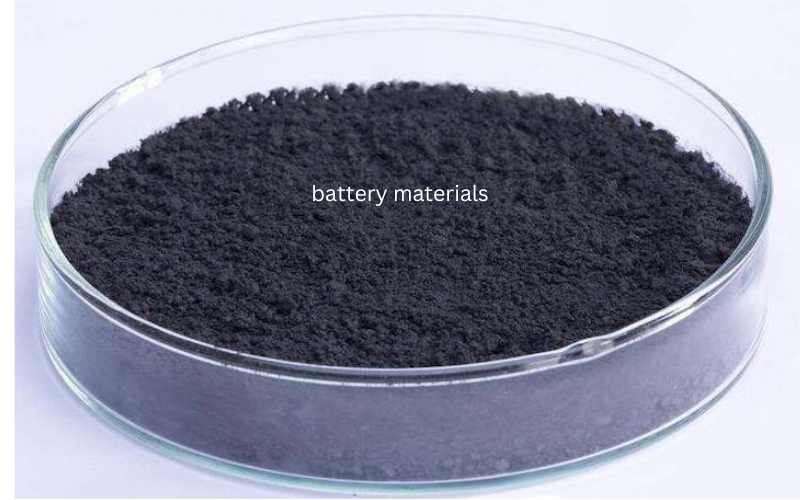When it comes to the mind-boggling innovations, electronic vehicles (EVs) shine. What makes them appealing? They don’t emit harmful pollutants. The number of users of these vehicles is increasing day by day.
China has become the world’s first country with 5 million EV cars, then the U.S. comes with 1.77 million cars, and then Germany with Germany with 570,000 cars.
Thanks to the battery technology that introduced such cars. Along with phones, solar panels, and flashlights, the batteries play an important role in making EVs work well. On, Top Battery Materials of that are the real heroes that run electric cars for hours.
In this article, we’ll discuss the crucial role of these materials in EVs.
What are battery materials?
Simply put, these materials are the building blocks that make batteries work. They have different type types: anodes, cathodes, electrolytes, and separators. Each one plays a specific role.
Anodes, like graphite in many batteries, store energy by taking in lithium ions. Cathodes, on the other hand, release lithium ions when the battery is used. Electrolytes allow ions to move between the electrodes, and separators keep the electrodes apart while still allowing ion flow.
The ideal material would be:
- Conductive – carry electricity well
- Stable – not break down easily
- Have high energy density – store a lot of energy in a small space
- Cost-effective – affordable to produce
But there are many materials that are good conductors but expensive samelike; some are cheap but do not hold much energy. Of course, perfection is rare. However, scientists are constantly working on developing new materials that could give all these properties. So, we can expect a future where everyone can take advantage of cheap yet effective battery solutions.
What is the functionality of the battery materials in EVs?
Here is the functionality of the materials in EVs:
1. Energy storage capabilities
The materials inside an electric vehicle (EV) battery are critical because they determine how far the car can travel on a single charge.
The cathode materials hold onto the positively charged ions to store the energy. On the other hand, anode materials hold the negatively charged ions. They release the energy back out when the car is in motion.
Together, these materials work together to influence how much energy the battery can hold and release. This ultimately affects the driving range of your EV.
2. Efficiency in power delivery
Next, electrolytes and separators make sure they can give power effectively to drive EVs.
The electrolytes carry the liquid ions between the battery’s parts. A good electrolyte allows ions to flow easily. So, it determines how quickly power can be delivered to the vehicle’s motor.
Additionally, the separator sits between the battery’s positive and negative sides. It keeps the electrodes apart while still allowing ion flow. These materials ensure that the flow of electricity within the battery is smooth and uninterrupted.
So, both of these battery materials drive the EVs smoothly without any hurdle, which maximizes their performance on the road.
3. Durability and lifespan
These materials also affect how long the battery lasts and how durable it is.
So, the materials like lithium-ion, nickel, cobalt, and manganese can make batteries last longer. While others, such as certain types of electrolytes, might make it wear out faster. This can be caused by things like constantly charging and draining the battery or exposure to extreme temperatures. For More Information
So, choosing the right materials is key to making sure your EV has a long and healthy life.
What are the Challenges and Considerations?
Here are some major challenges and considerations attached to creating EVs:
· Environmental impact of battery materials
One big concern is how batteries affect the environment. First off, making batteries requires getting certain materials from the earth, which can pollute the water. This includes digging up stuff like metals through mining. This way, the harmful metals can leak into the nearby water sources.
Plus, when batteries aren’t useful anymore, we have to figure out what to do with them. Sometimes, they end up in landfills, which isn’t good for the environment either. So, we need to think about how to take care of batteries from start to finish so we don’t harm our planet too much.
· Cost implications
The other challenge is regarding cost. Some materials are rare to find, which means they are not available everywhere. This can make batteries expensive and drive up the purchase price of electric cars compared to traditional gasoline vehicles.
Along with that, there are many economic factors that affect the cost of EVs. For that, things like supply and demand, production costs, and government policies can all influence. You may have an idea about import/export regulations that can demand significant taxes.
So, when considering electric vehicles, it’s important to think about whether they’re affordable and what factors might affect their price.
· Regulatory framework
Lastly, there are a couple of important considerations regarding regulations. That means we have to make sure that we follow all the rules about the environment. That includes recycling and reuse of batteries.
We need to make sure our battery production methods are sustainable. These include using renewable energy sources to power manufacturing facilities, reducing water consumption by implementing efficient water recycling systems, and minimizing waste generation through recycling and reusing material.
So, it’s not just about making batteries; it’s about making them in a way that’s safe and good for our world.
Conclusion
In conclusion, batteries are the shining stars among modern-day technologies. Due to this technology, we are able to enjoy the EVs without polluting the environment. That means the good EVs rely on good battery materials. They can increase energy storage capabilities, efficiency in power delivery, and durability and lifespan. But along with them, there are some challenges and considerations, too, when creating these EVS. For example, extracting metals from the earth to create batteries can pollute the water, and the cost implications with mining, supply, and production. Also, there are regulatory frameworks to follow. By considering these factors or overcoming these challenges, everyone can reap the benefits of cheap EVs in a green future. Thank visiting blogozilla.com



